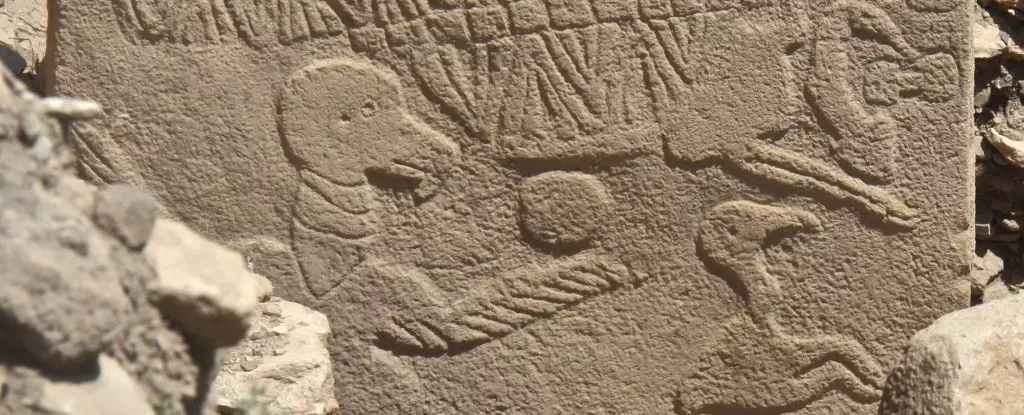Göbekli Tepe, an ancient monument located in Türkiye, stands as a testament to the ingenuity and sophistication of our ancestors more than 10,000 years ago. This temple complex has captured the imagination of researchers and archaeologists for decades, offering a glimpse into a world long forgotten. One of the most intriguing recent discoveries at Göbekli Tepe is a carving on a wall that could potentially be the earliest evidence of a calendar used by the Neolithic people who once inhabited the site.
At the heart of this discovery is the Vulture Stone, a carved pillar adorned with intricate designs, including the figure of a bird and stylized patterns. Previous research has suggested that the carvings on the Vulture Stone may represent constellations and even record the impact of a comet that occurred 13,000 years ago, coinciding with a significant climatic event known as the Younger Dryas. The V-shaped marks on the pillars at Göbekli Tepe are now being interpreted by researcher Martin Sweatman as representations of days, with one pillar potentially depicting an entire year with 365 days, aligning with the lunar months and solar year.
Sweatman’s analysis extends beyond the Vulture Stone, suggesting that other pillars at Göbekli Tepe may also contain celestial symbolism and references to cosmic events. The presence of V symbols on various figures throughout the site hints at a sophisticated system of timekeeping and astronomical observation by the ancient inhabitants. These symbols may have served as markers for important celestial events, such as solstices and meteor showers, providing a framework for understanding the passage of time and the changing seasons.
While Sweatman’s work has shed new light on the potential astronomical significance of Göbekli Tepe, it has not been without its critics. Archaeologists working at the site have challenged some of his conclusions, highlighting the complexities of interpreting ancient symbols and artifacts. Despite the controversies surrounding Sweatman’s analysis, the overarching theme of sophisticated sky observation by early civilizations remains a compelling aspect of the research.
The emerging picture of Göbekli Tepe as a center for astronomical observation and timekeeping underscores the advanced knowledge and capabilities of our ancient ancestors. By closely observing the movements of celestial bodies and recording significant events in the sky, the Neolithic people of Türkiye demonstrated a deep understanding of the natural world. The potential role of a comet strike in shaping religious beliefs and agricultural practices further highlights the interconnectedness of celestial phenomena and human society.
The exploration of the ancient calendar at Göbekli Tepe offers a fascinating window into the practices and beliefs of early civilizations. As researchers continue to unravel the mysteries surrounding this remarkable site, the significance of ancient astronomical knowledge in shaping human history becomes increasingly apparent. The legacy of Göbekli Tepe serves as a reminder of the enduring curiosity and ingenuity of humanity throughout the ages.

Leave a Reply